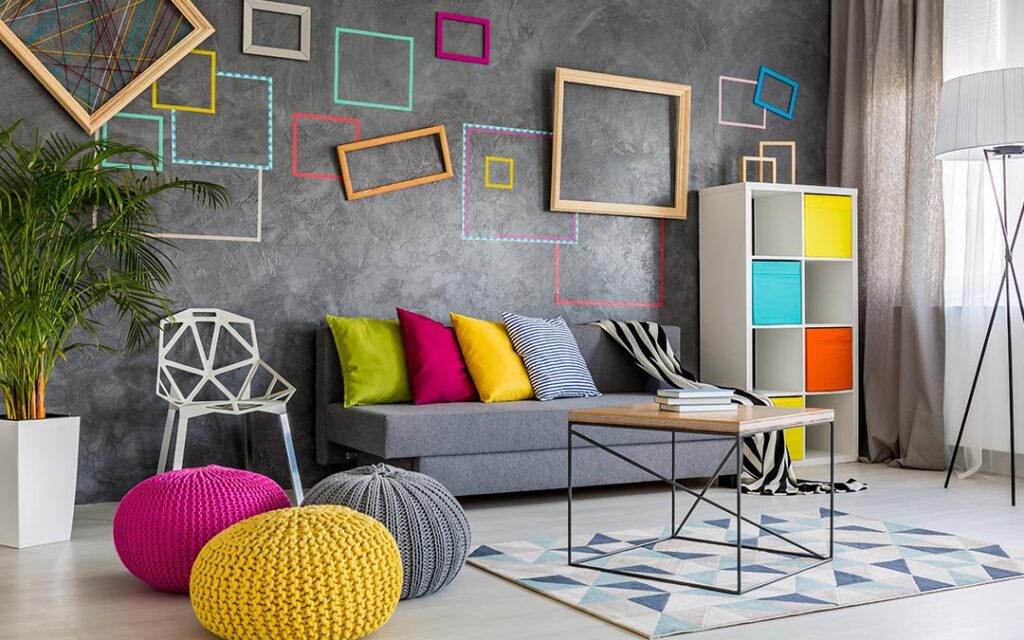As anyone who has embarked on a home improvement project knows, selecting interior paint colors can feel like navigating an endless spectrum of possibilities. With so many brands, lines, shades, and undertones, how do you narrow it down to the perfect hue? Whether after a bright white kitchen refresh or a moodier living room palette upgrade, there are a few key factors to remember as you start swatching.
In this comprehensive guide, we’ll explore the various white and color families available, what undertones truly do, and how to approach the process of selecting paint with purpose rather than paralysis. By the end, you’ll feel empowered and excited to transform your space rather than overwhelmed by the myriad options.
How to Select the Right Color Scheme for Your Interior
Before diving into the nitty-gritty of selecting the right color scheme, it’s crucial to understand that interior colors are not just about aesthetics. They play a critical role in shaping the vibe of your home, influencing your mood, and even reflecting your personality.
Picking the right shades can make your space feel cozy, vibrant, tranquil, or sophisticated, depending on your unique preferences. With the right approach, you can infuse every room with your style and create an ambiance that feels like home. Let’s delve into some key tips to guide you through this process.
Understanding the Color Wheel
The color wheel is your best friend in this endeavor. It’s a tool that shows how colors relate to one another and can guide you in creating a harmonious color scheme. When selecting colors, remember that opposing colors on the wheel (like blue and orange) create an energetic and vibrant interior. On the other hand, colors next to each other (like green and yellow) create a soothing and harmonious look.
Considering the Room’s Function
Think about the purpose of the room before settling on a color scheme. A calming color like blue or green might be perfect for a bedroom or study, where tranquility is key. You might opt for warmer, more social colors like red, orange, or yellow for a dining room or living area.
Taking Lighting into Account
Lighting significantly impacts how a color looks. You’ll want to think about the room’s natural light and any artificial light sources when selecting a color. A lighter color in a room with less natural light might help brighten the space, while in a well-lit room, you might have more flexibility to play with darker hues.
Factoring in Existing Furniture and Decor
Lastly, consider the color and style of your existing furniture, artwork, and other decor. The right paint color should complement these elements rather than clash with them. You can often find color inspiration within the patterns and materials of the items that will remain in the room.
Experimenting with Neutrals
Neutral paint colors like whites, grays, and beiges are far from boring. They provide an excellent backdrop for other design elements and can create a sense of calm and sophistication. Playing around with different neutral tones can add depth and dimension to a room.
Testing Colors Before Committing
Before you take the plunge and paint an entire room, it’s wise to test your chosen color in a small area first. This will give you a better understanding of how the color will look on a larger scale and under different lighting conditions throughout the day.
Balancing Warm and Cool Tones
A balanced color scheme often includes warm (reds, yellows, oranges) and cool (blues, greens, purples) hues. This can create a balanced, harmonious look and feel in your home. To create an engaging and visually appealing space, you might use cool tones for larger areas like walls and warm tones for accent pieces.
Remembering the Ceiling
The ceiling, often referred to as the “fifth wall,” can significantly influence the overall feel of a room. Painting the ceiling a lighter color than the walls can create the illusion of height and airiness, while a darker color can make a large room feel cozier. Don’t forget to think about your ceiling when selecting a color scheme.
Trusting Your Instincts
At the end of the day, remember there are no hard and fast rules for interior paint colors. While these tips can guide you in selecting a cohesive and pleasing color scheme, ultimately, you should trust your instincts and choose colors that make you happy and feel at home. After all, it’s your space, and the most important thing is that you love it. Happy painting!
Consulting with a Professional
If you’re feeling overwhelmed or unsure about selecting the right interior paint colors, don’t hesitate to consult with a professional. Interior designers and color consultants have extensive experience and expertise in creating stunning and cohesive color schemes for homes.
They can also consider your personal preferences and needs to help you achieve your space’s perfect look and feel. While it may require an additional investment, it can save you time and stress in the long run if you decide to contact them.

Pro Tips for a Perfect Paint Job
If you’ve picked your perfect palette and are ready to transform your space, it’s time to consider how to apply your paint for the best results. The paint job can make or break your interior design project. A poor paint job can undermine even the most beautiful color scheme. Here, we reveal some professional tips and techniques to help you achieve a flawless finish and bring your vision to life.
Invest in High-Quality Supplies
Don’t compromise on the quality of your supplies. Investing in high-quality brushes, rollers, and paint can make a world of difference in achieving a professional-looking finish. Good brushes and rollers provide excellent paint coverage and can make the application process much easier and more efficient.
Prep the Walls
Prepping your walls before you paint is essential. This includes cleaning them thoroughly, repairing cracks or holes, and sanding any rough spots. You can attain a smoother, more polished finish by ensuring your walls are clean, smooth, and ready for paint.
Use Primer
Primer is not just optional – it’s a necessity. It helps to hide any existing colors or stains on the walls and provides a good base for the paint to adhere to, resulting in a more vibrant, durable finish.
Paint from Top to Bottom
Start painting from the top of your wall and work your way down. This method lets you catch any drips as you go, preventing them from drying and ruining your smooth finish.
Keep a Wet Edge
To avoid visible lines or streaks, always try to keep a “wet edge.” This means you should overlap your paint onto the wet paint edging you’ve just applied rather than starting new on a dry portion of the wall.
Allow Adequate Drying Time
Patience is key when it comes to painting. Don’t rush the process. Ensure enough time for the paint to dry properly between coats. Not only will this result in a more even finish, but it will also give the paint time to cure, enhancing its durability.
Clean Up Properly
Proper cleanup and storage of your painting tools will extend their life and ensure they’re ready for use in future projects. Clean brushes and rollers thoroughly, remove all paint and store them in a dry place.
Final Thoughts
Selecting the perfect interior paint colors and applying them correctly can significantly impact your home’s overall look and feel. By considering factors such as lighting, furniture, and personal style and following professional tips for a flawless finish, you can create a beautiful and cohesive color scheme that reflects your unique taste and makes you feel at home. Don’t be afraid to experiment with different colors and consult with professionals for guidance.






